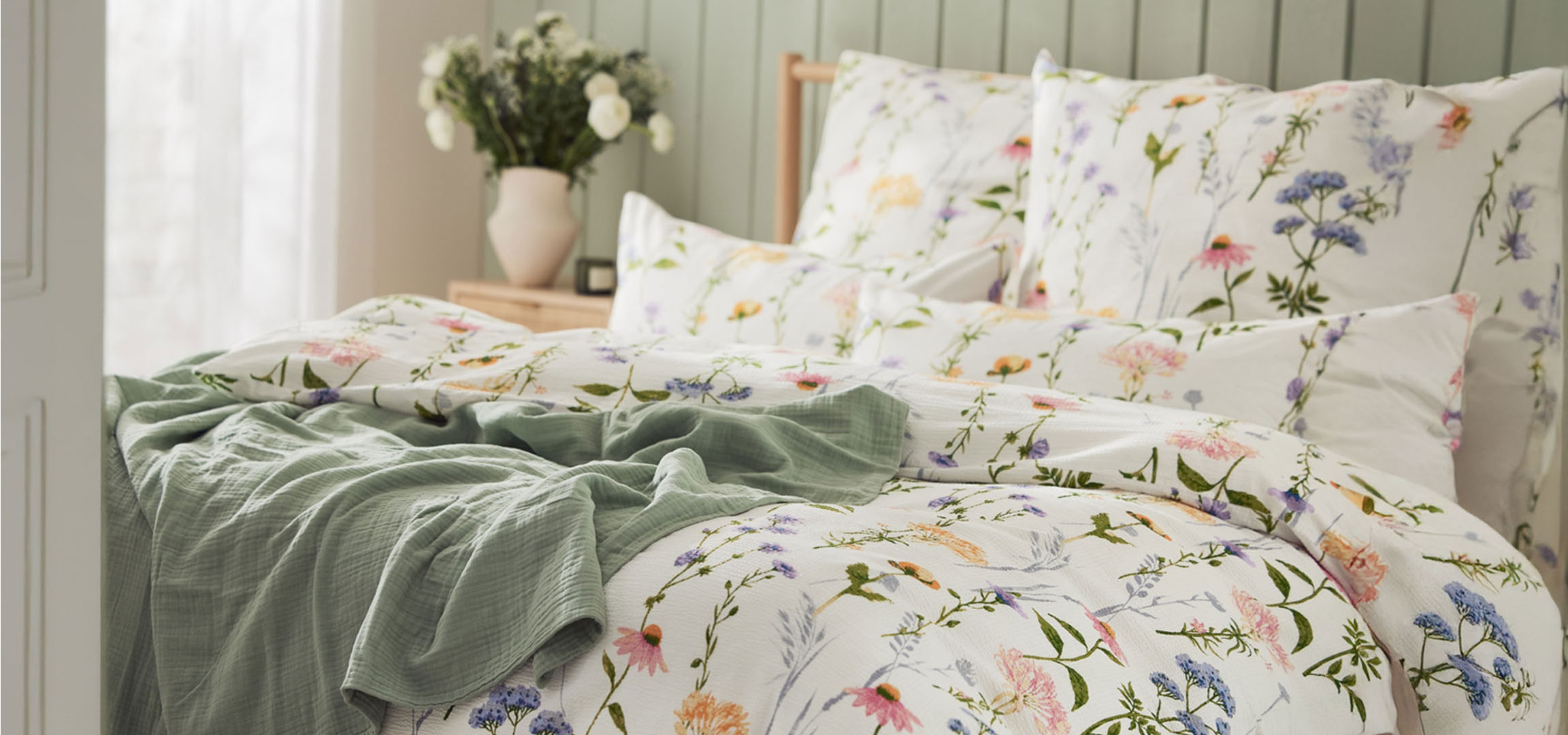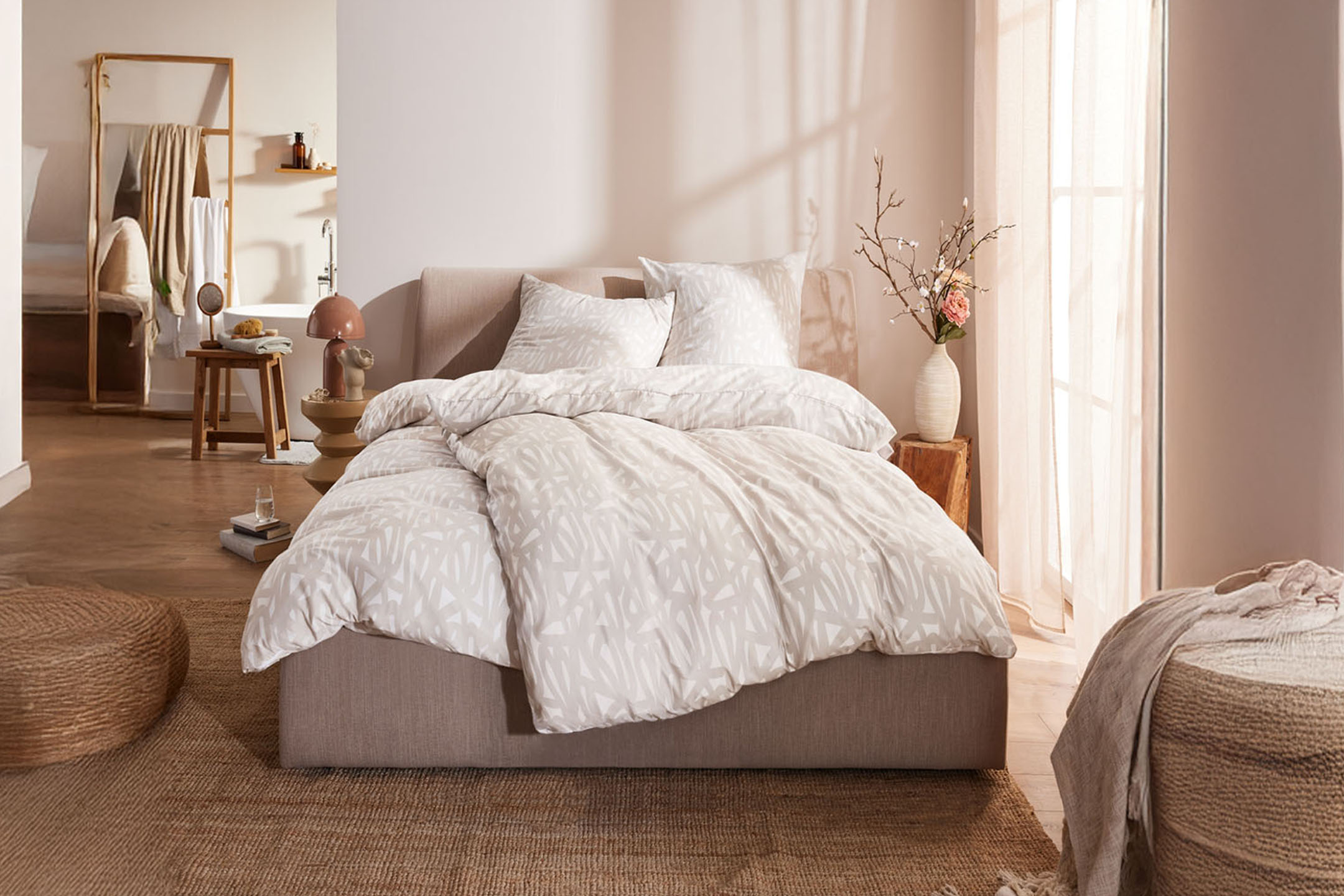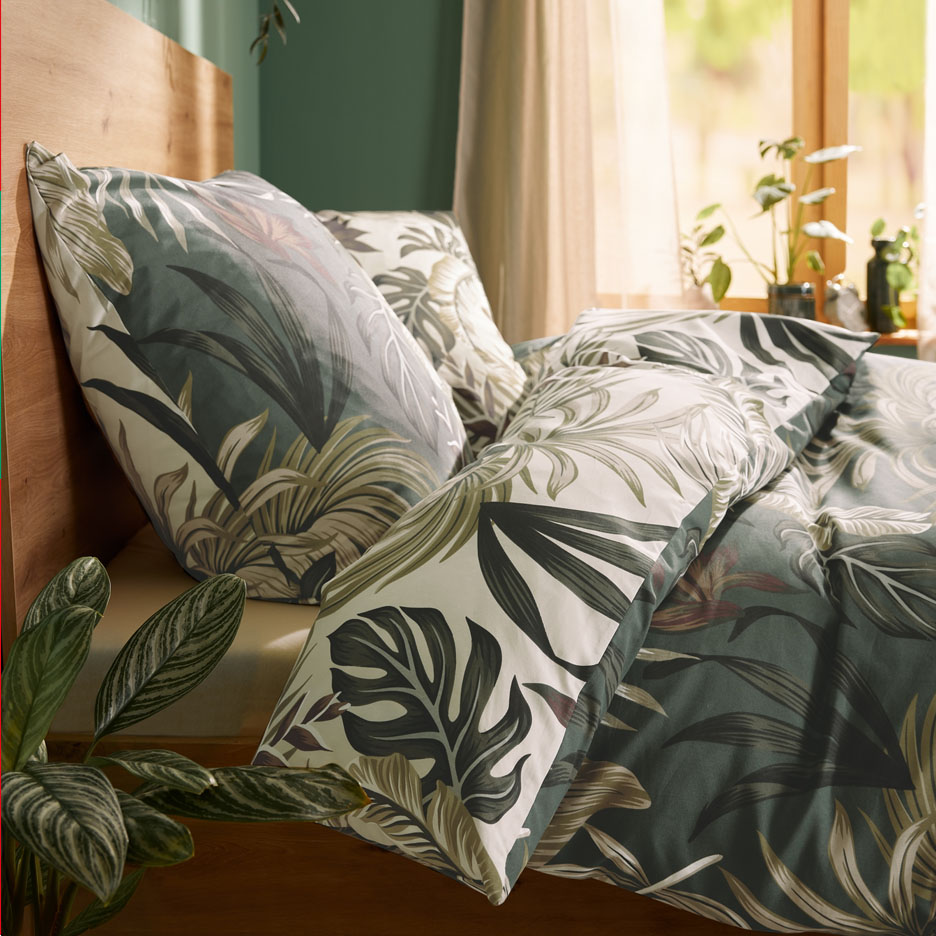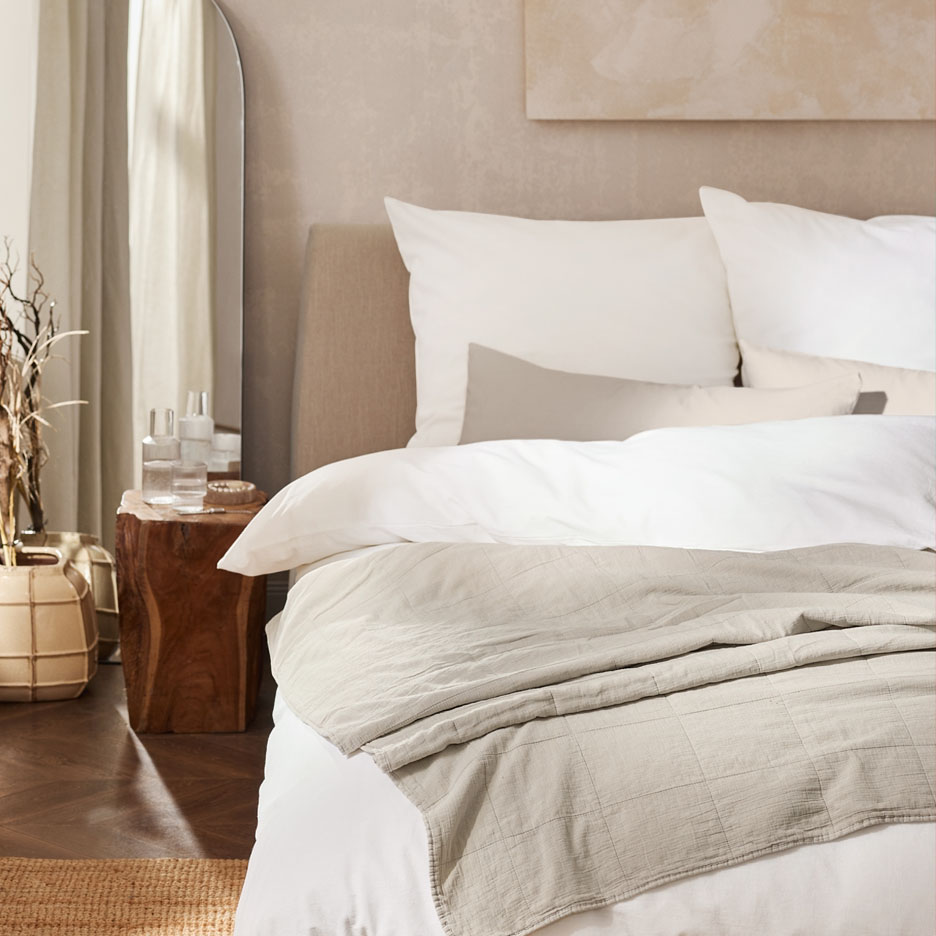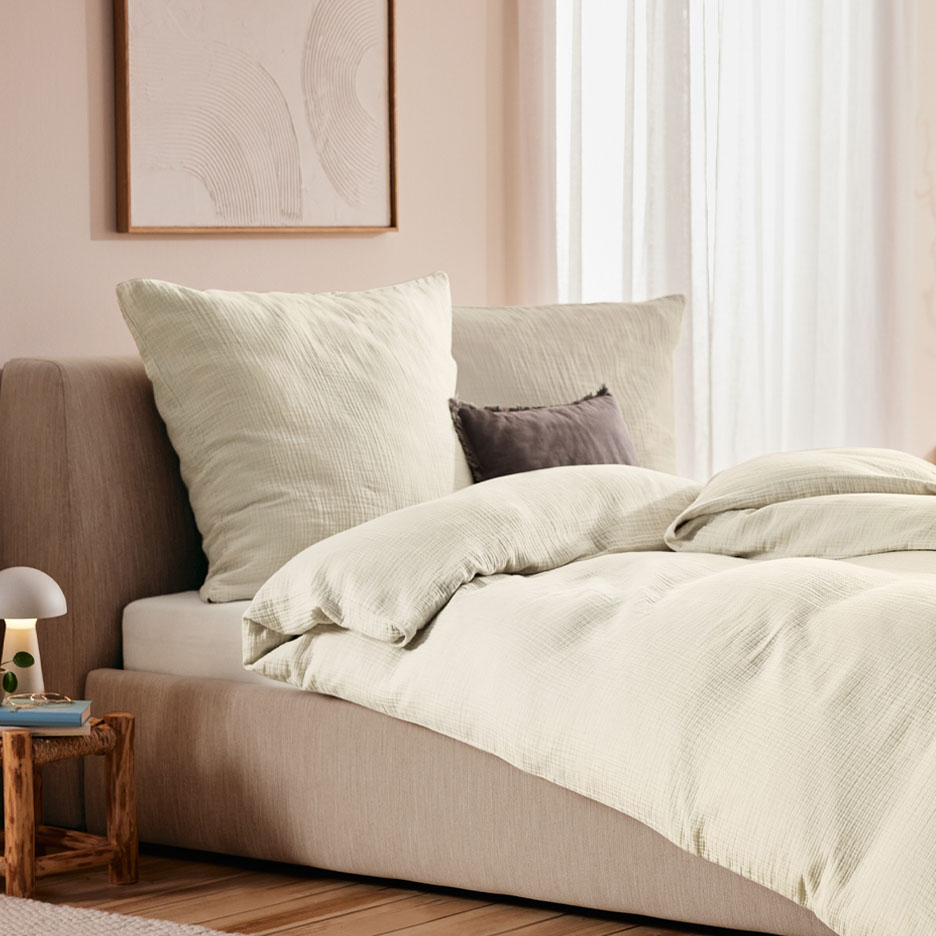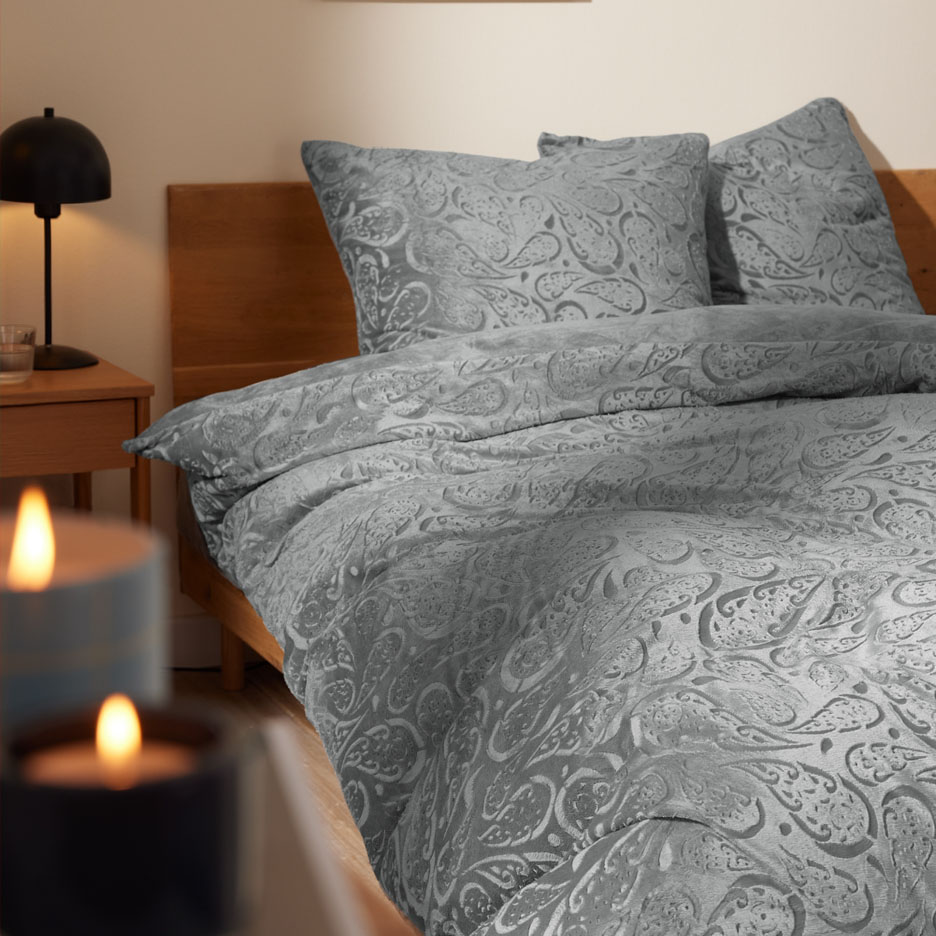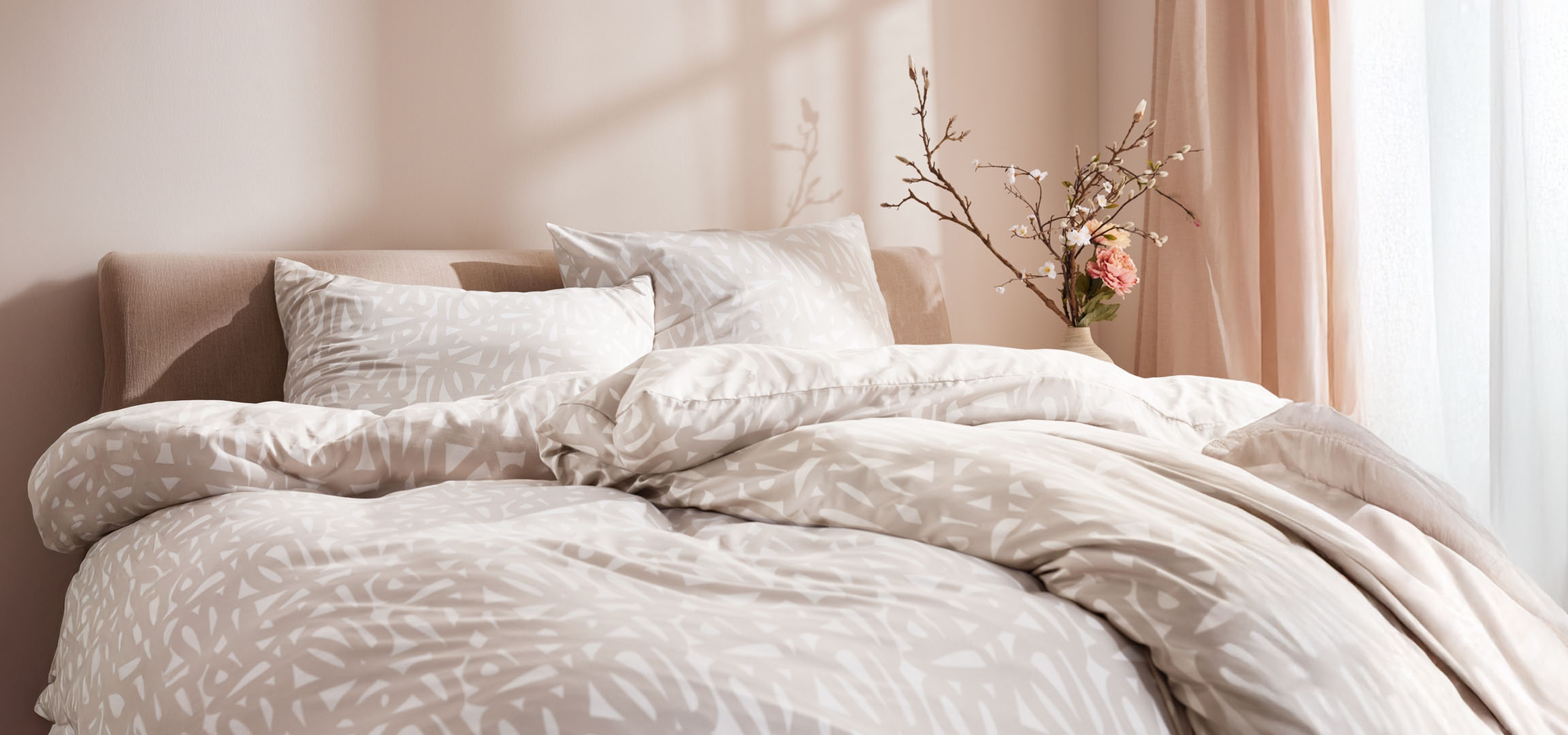Bed linen for every season: how to choose the right material
Looking for beautiful dreams? With the right bed linen for every season, you'll be able to sleep soundly until the next morning. Whether bed linen for Winter or Summer: get tips on choosing the right material and enjoy a comfortable night's sleep.
Bed linen materials: did you know?
What is the difference between flannel, jersey, seersucker or satin? Not necessarily the material! These terms describe the weave and processing of the fibre. That's why you can buy satin, for example, both as cotton bed linen and as microfibre bed linen. Both fibres have advantages and disadvantages.
Comparison between cotton and microfibre bed linen
Cotton bed linen | Microfibre bed linen |
|---|---|
+ Breathable | + Ideal for allergy sufferers |
+ Draws moisture away from the body | + Pleasantly cosy |
+ Pleasantly soft on the skin | + Easy to clean |
+ Durable and versatile | + Stable and colour-fast |
- Tends to crease | - Not as breathable |
In addition to pure cotton or microfibre bed linen, you can find clever fibre blends at Lidl that combine the advantages of both variants. Allergy sufferers in particular often find a good solution with a mixed fibre double in their bed linen!
Which bed linen for which season?
Everybody sleeps differently. Regardless of the time of year, some people tend to sweat and have a higher body temperature, while others always need warmth. When choosing your bed linen, you should take this into account as well as the room temperature, the requirements of your skin and, of course, your taste.
If you don't want to change your bedding every season - and you sleep well whatever the weather - simply opt for all-round materials such as satin or Renforcé for your home textiles.
Renforcé bed linen is particularly popular as a cotton version and is light, smooth and particularly moisture-absorbent. This makes it not only the perfect bed linen for Summer, but also a year-round companion.
Which bed linen in Summer?
Bed linen for Summer should wick moisture away from the body and give you a comfortable sleep without heating up your body. This works with:
 Satin bed linen
Satin bed linenSatin bed linen is not just a luxurious eye-catcher. The dense weave of different materials ensures an extra-smooth surface that feels pleasant against the skin. Satin is also wonderfully breathable.
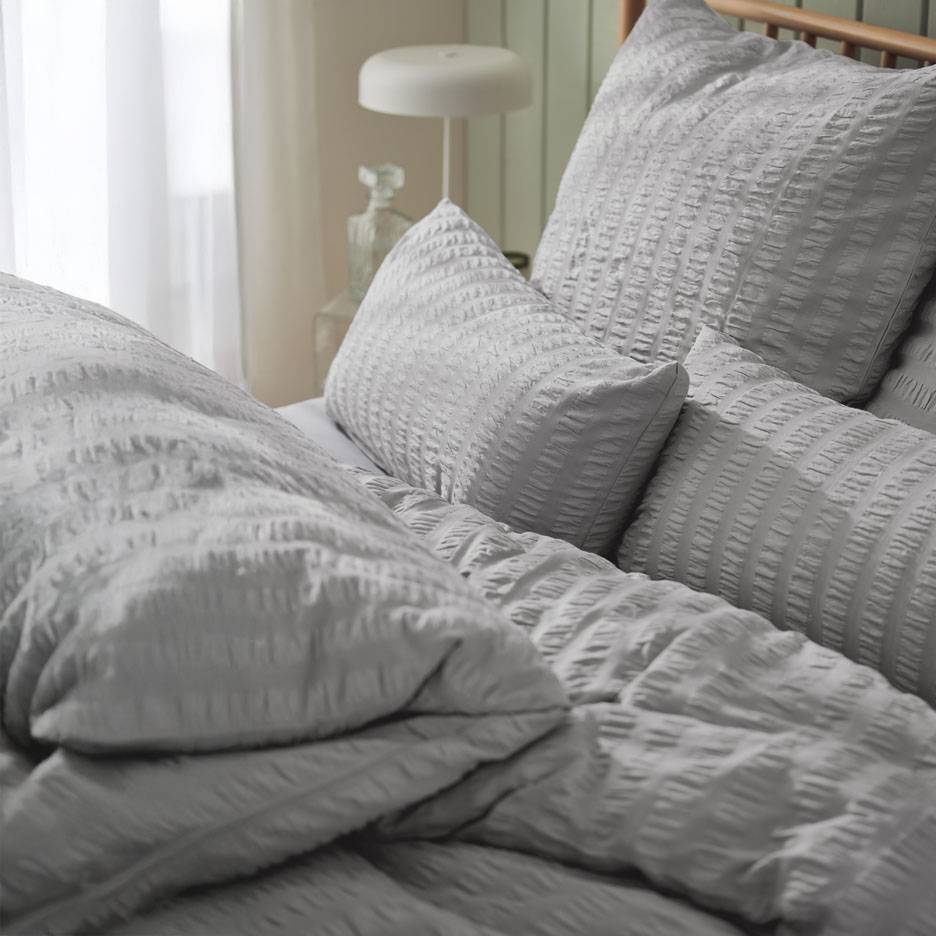 Seersucker bed linen
Seersucker bed linenThe typical seersucker crepe structure has more than just a visual function. This structure allows air to circulate optimally around the skin, making the bed linen feel particularly cooling.
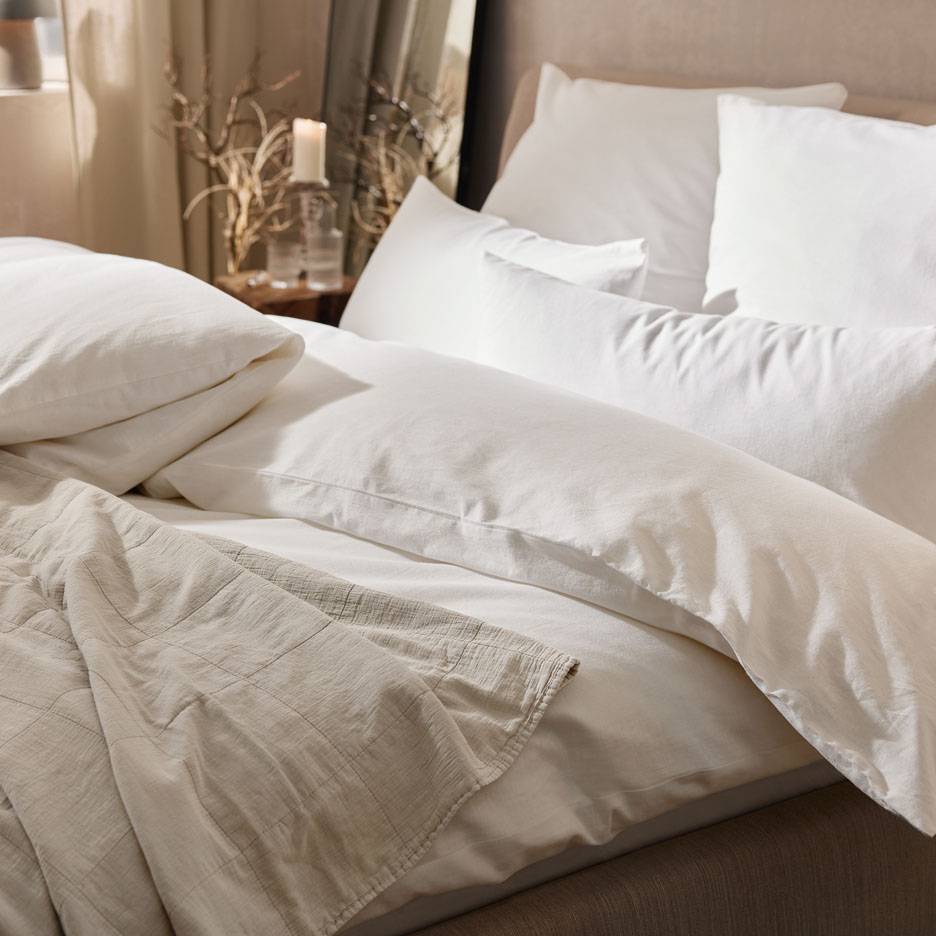 Linen bed linen
Linen bed linenThis natural fibre is a summer hit: it could hardly be more airy and temperature-friendly. Linen bed linen absorbs moisture optimally, wicks it away, dries quickly and thus regulates body temperature. It can also be washed at high temperatures.
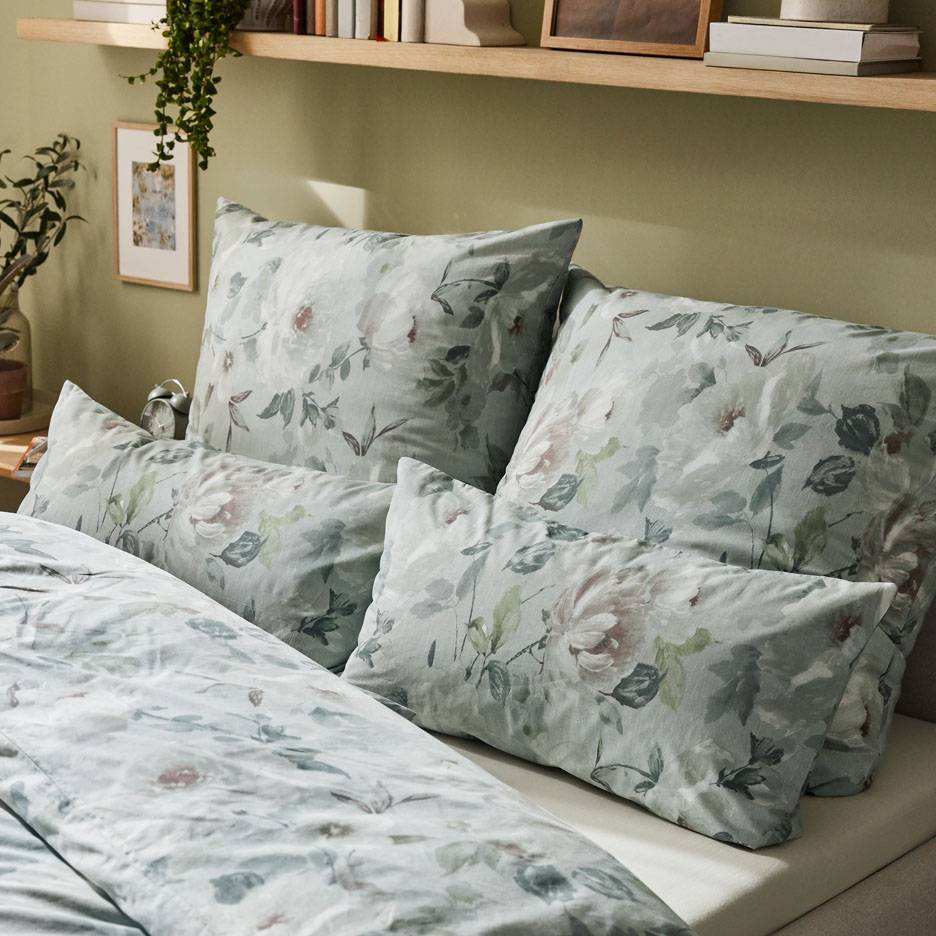 Microfibre bed linen
Microfibre bed linenWhen functional microfibres are processed into lightweight summer materials, you can look forward to robust and easy-care bed linen. The supple microfibre bed linen reliably absorbs moisture and releases it again quickly.
Which bed linen in Winter?
Even with the window closed, it can get chilly in the bedroom. Warming fibres help you to stay warm while dreaming. The best bed linen for Winter is:
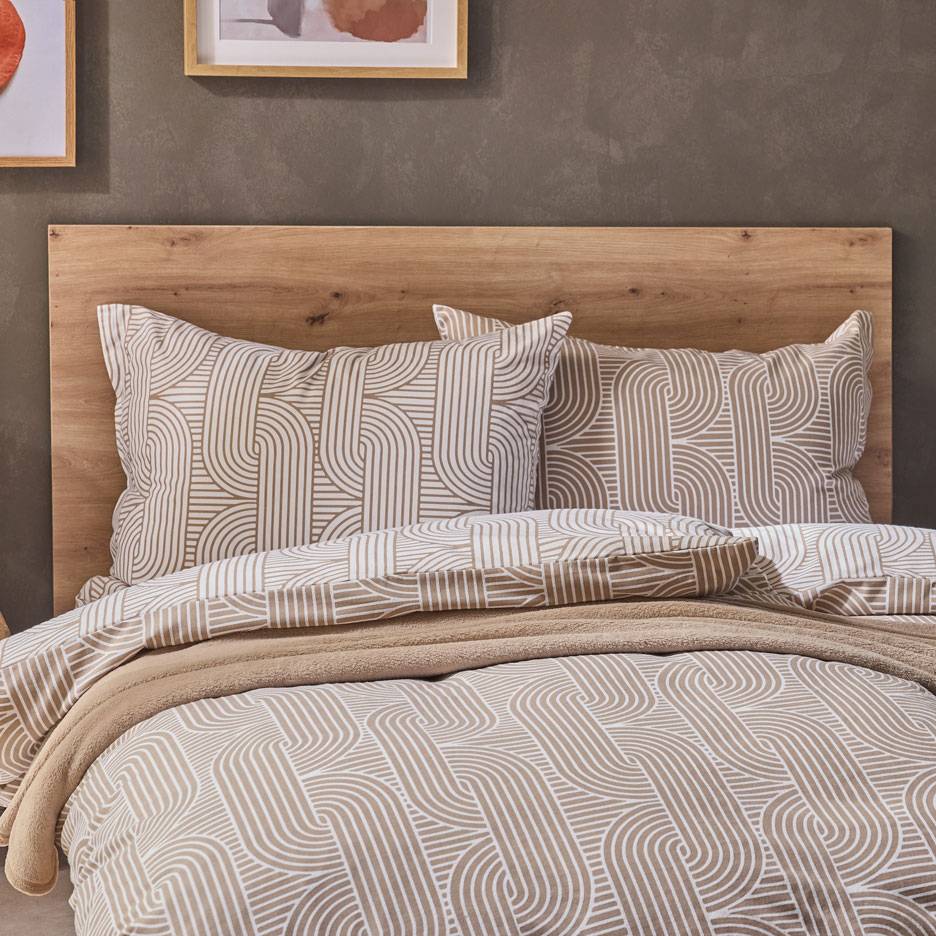 Beaver bed linen
Beaver bed linen(Fine) beaver is a dense cotton fabric that is roughened for even more warmth. Bed linen in beaver quality is ideal for all winter nights.
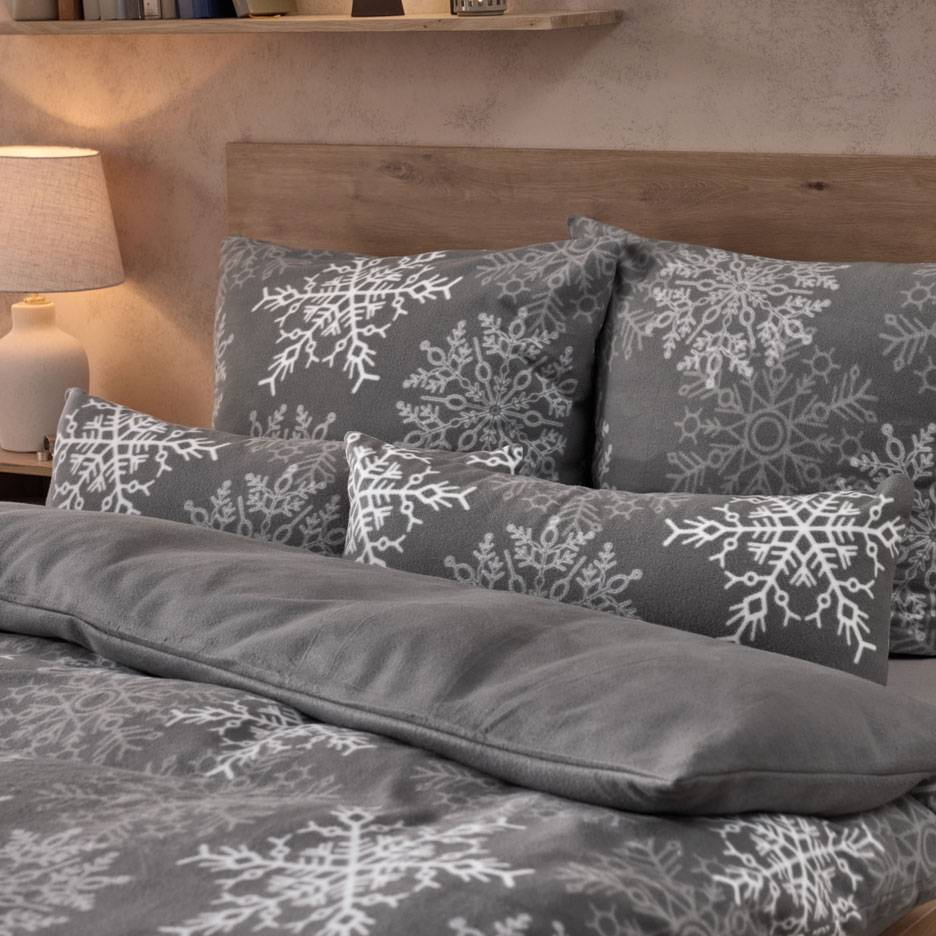 Fleece bed linen
Fleece bed linenFleece is a cosy, warm all-rounder. The material is warm, absorbs moisture and is also very easy to care for.
Which bed linen is allergy-friendly?
Dust or mites can be quite a problem for people with allergies. The bed is a typical hotspot, but you can defuse this with the right bed linen. Be sure to pay attention to the following factors when making your choice:
- particularly tightly woven
- mite-repellent
- moisture regulating
- washable at high temperatures
- hard-wearing and durable
- with zip
Microfibres, which are processed into satin bed linen, for example, have several advantages in this respect. Their extra-smooth surface enables particularly dense weaving and they are also very hard-wearing. This means you can wash them more often and fight mites or dust with high washing temperatures. High-quality cotton is particularly suitable for regulating moisture and making the sleeping environment as allergen unfriendly as possible.
Bed linen sizes: What is important?
Duvets, pillows and bed linen should form a perfectly fitting trio. With the right size, the duvets and pillows will stay in shape in their covers and nothing will slip or puff up in the wrong places. The pillowcase in a Lidl bed linen set always measures 80 x 80 cm. Our duvet sizes are:
- Bedding 135 x 200 cm - this standard size for duvets is the most common and is suitable for both adult and children's bedding.
- Bed linen 155 x 220 cm - this oversize is suitable for anyone who needs cosy comfort from their duvet.
- Bed linen 200 x 220 cm - dream away snuggled up together or benefit from each other's body heat? The king-size duvet is ideal for this.
Tip: The right duvet length depends on your height. It should be at least 20cm longer than you. Up to a height of 1.80 metres, a duvet with a length of 200cm is perfectly adequate. If you are taller, it is better to choose a 220cm duvet.
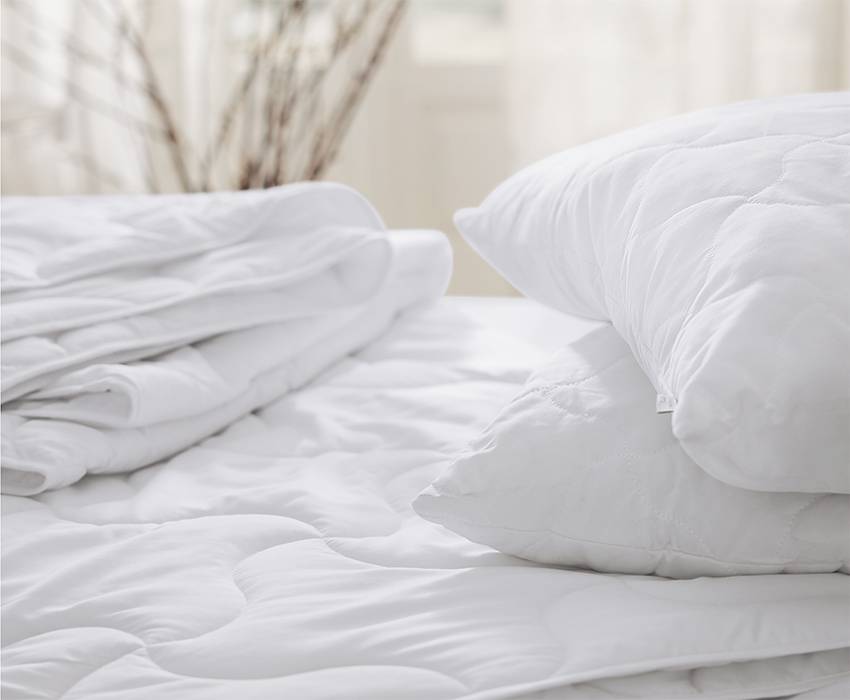
Washing bed linen: What should I look out for?
To ensure that you always feel comfortable in your bed, you should wash and care for your bed linen regularly. Pay attention to the care label on the linen and follow a few tips:
- Wash new bed linen before using it for the first time.
- Turn the bed linen inside out and close buttons and zips.
- Wash cotton bed linen at 60°C, for allergies at 90°C.
- Microfibre bed linen is hygienically clean at 40°C.
- Whether your bed linen can be tumble dried depends on the material - follow the care instructions.
